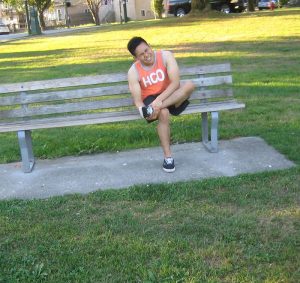Metatarsalgia is a condition in which the ball of the foot is painful and inflamed. It is caused by performing activities such as jumping and running, deformities of the foot and wearing shoes that are too tight. It usually happens in the heads of the metatarsals where the 3 center toes link with the ball of the foot and affects the joints and bones of the metatarsals.
The severity of the pain fluctuates and can affect 1-2 toes, but in some cases entire foot or both are affected. It becomes worse when placing weight on the foot such as walking, standing and running. Middle-aged females are susceptible to this condition, but it can affect both males and females.
Risk factors for metatarsalgia
- Wearing high heeled shoes, ill-fitting shoes and shoes with spikes such as cleats
- Participating in high-impact sports such as jumping and running
- Being overweight
Apply an ice pack on the affected area for at least 15-20 minutes several times every day. - Problems of the foot that includes hammertoes and calluses
- Inflammatory arthritis such as rheumatoid arthritis or gout
Symptoms
- Severe pain when standing, running and flexing the feet or walking especially barefoot on hard surface and pain is reduced when resting.
- Sharp, aching or burning pain felt at the ball of the foot
- Numbness or tingling in the toes
- A feeling of having a pebble in the shoe
Causes
- A high arch puts excessive pressure on the metatarsal and the 2nd toe is longer than the big toe
- Intense training or activities such as distance running and wearing ill-fitting shoes.
- Wearing shoes that are too small or high heels that cause the foot to deform such as downward curling of the toe or hammertoe. Swelling and painful bumps found at the bottom of the big toe or bunions.
- Excess weight
- High heels, shoes with a limited toe box space or athletic shoes that lacks support and stuffing.
- Stress fractures or tiny breaks in the metatarsals or toe bones
- Non-cancerous growth of fibrous tissues on the nerve usually the 3rd and 4th metatarsals heads.
Treatment
- Apply an ice pack on the affected area for at least 15-20 minutes several times every day.
- Take an over-the-counter pain and anti-inflammatory medication such as ibuprofen to lessen the inflammation and pain.
- Avoid high-impact sports and exercises that put excessive pressure on the feet while still in the healing process. Perform gentle exercises for the feet such as cycling or swimming.
- Elevate the feet above the level of the heart to lessen the pressure on the area. Raise the affected area using a couple of pillow to keep it elevated.
- Exercise the ankles and keep stretching the Achilles tendon to prevent stiffness and maintain flexibility of the muscles.
- Use fitted insoles or orthotics to reallocate pressure, improve functioning of the foot and protect the ball of the foot.
Disclaimer / More Information
The material posted on this page on metatarsalgia is for learning purposes only. Learn to recognize and manage foot conditions by taking a first aid and CPR class with one of our training providers.

